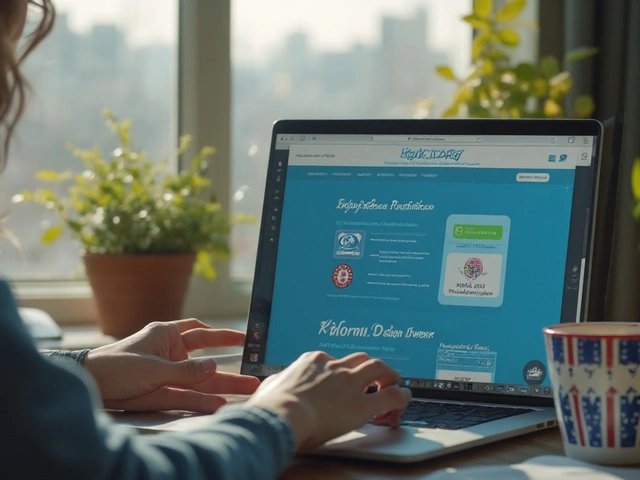If you’re hunting for the lowest price on generic Nexium (esomeprazole) online, you want two things: real savings and zero sketchy risks. You can get both-if you know the difference between legit U.S. pharmacies and the sites that promise “no prescription needed.” I’ll show you what to buy (OTC vs prescription), what a fair 2025 price looks like, how to avoid counterfeits, and how to place an order that actually arrives on time.
What you’re actually buying: benefits, forms, and who it’s for
Esomeprazole is the active ingredient in Nexium. It’s a proton pump inhibitor (PPI) that lowers stomach acid to help with frequent heartburn and, under a clinician’s care, GERD, erosive esophagitis, and prevention of NSAID-related ulcers. The brand name is Nexium; the generic is esomeprazole magnesium. In the U.S., you can buy 20 mg over-the-counter (OTC). Higher doses and certain forms are prescription-only.
Key forms you’ll see online:
- OTC delayed-release tablets or capsules: 20 mg. Labeled for “frequent heartburn” (symptoms 2+ days/week), per the FDA Drug Facts label.
- Prescription delayed-release capsules: usually 20 mg or 40 mg for GERD/erosive esophagitis under clinician guidance (FDA labeling).
- Prescription oral suspension packets: used when swallowing capsules is tough; dosing per prescriber.
What it does well: reduces acid, often within 1-4 days for steady relief. It’s not a same-hour rescue like antacids. You take it once daily, 30-60 minutes before a meal. For OTC use, the FDA label says 20 mg daily for 14 days; you shouldn’t repeat more than once every 4 months unless a clinician says otherwise.
Who should talk to a clinician first: anyone with alarm symptoms like trouble swallowing, black stools, bloody vomit, unintended weight loss, chest pain, or persistent symptoms beyond two weeks. Also: people on blood thinners, clopidogrel, methotrexate, digoxin, or tacrolimus; those with kidney or severe liver disease; and pregnant or breastfeeding patients. This isn’t gatekeeping-it’s safety and it’s on the FDA label and major GI guidelines (American College of Gastroenterology, American Gastroenterological Association).
Quick expectations check: PPIs help many, but not everyone needs long-term use. The ACG’s GERD guidance supports the lowest effective dose once symptoms are controlled. For some folks, stepping down or on-demand therapy is reasonable once you’re stable. Bring up a plan with your clinician, especially if you’ve been on a PPI for months.
Real 2025 prices and how to pay less (without weird websites)
Let’s set a realistic price map. Online and local pharmacy prices jump around, but these are typical U.S. cash ranges in 2025 before insurance. Coupons from reputable sources can knock prices down further.
| Product | Common Supply | Typical 2025 Cash Price Range | Price Tips |
|---|---|---|---|
| Esomeprazole OTC 20 mg (generic) | 14-count (14 days) | $9-$16 | Warehouse clubs, store brands, and online bulk packs are the sweet spot. |
| Esomeprazole OTC 20 mg (generic) | 42-count (3 packs of 14) | $22-$38 | Watch unit price; 42-counts often win on price per dose. |
| Rx Esomeprazole 20 mg capsules (generic) | 30 capsules | $10-$20 with a common coupon; $80-$150 cash | Prescription discount programs matter; never skip them at checkout. |
| Rx Esomeprazole 40 mg capsules (generic) | 30 capsules | $12-$25 with a common coupon; $100-$180 cash | Many chains price-match coupons shown on your phone. |
| Rx Esomeprazole packets (oral suspension) | 30 packets | $35-$80 with coupon; $200-$350 cash | Harder to source online; confirm stock before paying. |
| Brand Nexium 40 mg | 30 capsules | $250-$350 cash | Choose generic unless brand is clinically required. |
Insurance caveat: many plans prefer generic esomeprazole or require step therapy with omeprazole first. If you’re paying cash, stack a reputable coupon on top of a low-price pharmacy-it often beats insurance copays.
Simple math to spot deals: divide total price by total milligrams. For example, $24 for 30 capsules of 40 mg is $24 ÷ (30×40) = $0.02 per mg. If another site charges $18 for 20 mg, 30 capsules, that’s $18 ÷ (30×20) = $0.03 per mg. The cheaper one isn’t always the lower cost per mg.
What “cheap” should never mean: no-prescription claims for Rx strengths, overseas shipping without U.S. verification, or pills that look off (odd color, no imprint). Those are classic red flags for counterfeits.
Stay safe: how to pick a legit online pharmacy (and skip the traps)
Here’s the practical safety checklist I use before I buy any prescription online:
- U.S. license visible: pharmacy license number and state board link. Every legit U.S. pharmacy lists this.
- NABP-accredited: look for National Association of Boards of Pharmacy’s Digital Pharmacy Accreditation or the .pharmacy domain (NABP). It’s a strong trust marker.
- Requires a valid U.S. prescription for 40 mg: if they promise Rx-strength with “no Rx” or “online questionnaire only” without a clinician review, stop.
- Real U.S. address and phone support: not a P.O. box, not offshore. You should be able to reach a pharmacist.
- Secure checkout and transparent policies: clear shipping timelines, return/refund policy, and privacy policy.
- No spammy claims: “miracle cure,” “100% safe for long-term,” or “approved everywhere” are marketing red flags.
Why this matters: counterfeit and subpotent PPI pills are a real problem in unverified international markets. The FDA’s BeSafeRx program and NABP both warn about sites that sell Rx drugs without prescriptions or hide their location. If the price is shockingly low and the rules vanish, assume risk is high.
On safety and side effects: PPIs are widely used and generally well tolerated, but long-term use has been linked with risks like low magnesium, B12 deficiency, increased risk of certain gut infections including C. difficile, and, in some reports, kidney and fracture risks. Big GI societies (ACG, AGA) say benefits often outweigh risks when PPIs are indicated, but they also stress reevaluating need and dose regularly. Bring it up with your clinician if you’ve been on a PPI for months.
Drug interactions and special cases (evidence-based, summarize only):
- Clopidogrel: Omeprazole and esomeprazole can reduce formation of clopidogrel’s active metabolite via CYP2C19. Cardiology and GI guidance advises caution; discuss alternatives (like pantoprazole) with your prescriber if you’re on clopidogrel.
- Methotrexate (high dose), warfarin, digoxin, tacrolimus: interactions are documented in FDA labeling; clinicians often adjust monitoring or choose alternatives.
- Pregnancy/breastfeeding: PPIs have reassuring data, but decisions are individualized. Confirm with your OB or pediatric clinician.
As a parent who’s ordered meds while juggling dinner and a bedtime protest, convenience matters. But nothing derails a week like chasing down a sketchy order. Stick to the checklist-it’s five minutes that saves a lot of headache.

Nexium vs other options: when to switch, when to stay
PPIs work in the same neighborhood, but one may fit your situation or insurance better.
- Esomeprazole (Nexium): often a touch stronger than omeprazole in some studies, but not night-and-day. Broadly used for GERD and erosive esophagitis. Widely available OTC at 20 mg.
- Omeprazole (Prilosec): cheapest and most available OTC PPI; first-line for many. If it works, insurance loves it.
- Pantoprazole (Protonix): common choice if you’re on clopidogrel due to lower CYP2C19 interaction concerns. Usually Rx-only in the U.S.
- Lansoprazole (Prevacid): solid OTC option, sometimes priced well in bulk.
- Rabeprazole (Aciphex): Rx-only, sometimes used if others fail or cause side effects.
What about H2 blockers (famotidine) and antacids? H2 blockers can help at night or for occasional symptoms, and antacids like calcium carbonate give quick relief. For frequent symptoms (2+ days/week), PPIs are usually more effective according to ACG guidance. Many folks combine a bedtime H2 blocker with a morning PPI for short bursts during flares-ask your clinician before you try that.
When to consider switching PPIs: after 2-4 weeks at the right dose and timing (before breakfast), if you’re still struggling. Guidelines often suggest a different PPI trial before calling it quits, or checking for non-acid causes. Also confirm lifestyle triggers-late eating, high-fat meals, large coffee intake, alcohol, mint, or tight waistbands can undo a good PPI plan.
How to place a safe order today (OTC or prescription)
Here’s the fast path that keeps costs down and your order safe:
- Decide OTC vs Rx: If you have frequent heartburn and haven’t done a 14-day OTC course, start there. If you’ve been diagnosed with GERD, erosive esophagitis, Barrett’s, or need 40 mg, you’ll need a prescription.
- Pick a verified U.S. pharmacy: Choose a site with state license, NABP accreditation, and U.S. address. Avoid overseas shipping for Rx meds.
- Compare price per mg: Use the simple unit-price math. Load up reputable coupons on your phone before checkout, even for online orders.
- Check stock and delivery: Capsules are common; oral packets can be out of stock. Confirm shipping timelines, especially if you’re nearly out.
- Upload Rx or use telehealth: Legit pharmacies require a prescription. Many offer telehealth visits if you don’t have one; that visit should involve a U.S. clinician who reviews your history.
- Inspect on arrival: Look for the correct strength, NDC, lot number, expiration date, and standard U.S. pill imprints. Save the info card.
Reasonable shipping expectations: 2-5 business days for standard shipping, 1-2 days for express. Heat-sensitive packaging isn’t critical for standard PPIs, but you still want intact, sealed bottles or blister packs.
Return and refund sanity: Good pharmacies allow returns for damaged or wrong items (not opened meds). If anything looks off-pills with no imprint, strange smell, broken seals-contact the pharmacist and do not take the product.
Ethical call to action: use a licensed U.S. pharmacy, get a proper prescription for 40 mg or packets, and ask your clinician about dose and duration. That’s how you save money and keep your care safe.
Mini‑FAQ
buy generic Nexium online
Is the generic as good as brand Nexium? Yes. FDA generics must show bioequivalence to the brand. Esomeprazole magnesium generics meet the same quality standards.
How long until it works? Some relief can come in the first few days, with full effect by day 3-4. It’s not a same-hour fix. Use antacids for breakthrough symptoms as needed (unless your clinician says otherwise).
Can I take esomeprazole long-term? Sometimes, yes, if the benefit is clear and a clinician agrees. ACG/AGA guidance supports using the lowest effective dose and checking in periodically to see if you can step down.
What if I miss a dose? Take it the next day as usual before a meal. Don’t double up.
Is 20 mg OTC the same as 20 mg Rx? The active ingredient and strength are the same; the label and intended use differ. OTC is labeled for 14-day courses. Longer use should be clinician-directed.
Is there a best time to take it? 30-60 minutes before breakfast is standard. If you’re on twice-daily dosing per a prescription, the second dose is usually before dinner.
Any food or drink gotchas? Very large, high-fat meals, late-night eating, and alcohol can worsen symptoms. Coffee and mint can be triggers for some people. Track your patterns.
Can kids use esomeprazole? Esomeprazole has pediatric approvals for certain conditions. Dosing is weight- and condition-specific-this is one for a pediatric clinician.

Next steps and troubleshooting by scenario
If you need relief today: grab OTC esomeprazole 20 mg and start your 14-day course before breakfast. Use a simple antacid for breakthrough burn. If you’re still struggling after two weeks, see your clinician.
If cost is king: compare store-brand esomeprazole 42-count OTC offers and do the price-per-mg math. For Rx 40 mg, pull up two to three reputable coupon prices and call the pharmacy that posts the lowest cash rate; ask about price-matching.
If you’re on clopidogrel: ask your cardiology or primary care team if pantoprazole is a better fit. Don’t make the switch solo; get the green light first.
If you prefer liquids: confirm the pharmacy stocks oral suspension packets and get the prescription sent there before you pay online.
If you’re pregnant or breastfeeding: call your OB or pediatric clinician. PPIs have reassuring data, but personal factors matter. Famotidine might be suggested first for some.
If symptoms keep breaking through: confirm timing (30-60 minutes before meals), check triggers, consider a short course of a bedtime H2 blocker with clinician approval, and talk about a different PPI trial. If you have alarm symptoms, seek care now.
If your order looks wrong: don’t take it. Call the pharmacy, report the issue, and ask for a replacement or refund. Share the NDC and lot numbers from the label when you call.
If you prefer local pickup: many chains let you order online, apply coupons, and pick up same day from a licensed store. Fast and still cheap.
Key sources that guide this advice: FDA Drug Facts for OTC esomeprazole, FDA-approved labeling for Rx esomeprazole, FDA BeSafeRx, NABP Digital Pharmacy Accreditation, and GERD practice guidance from the American College of Gastroenterology and American Gastroenterological Association. Those are the guardrails I rely on when I’m making choices for my own household here in Seattle-because the only thing worse than heartburn is wasting money on a risky order.






Stick to licensed U.S. pharmacies and use prescriptions the way they were intended, because safety matters more than a couple of bucks.
There is a moral duty here to your own health and to the broader community to avoid sketchy no‑RX sites that traffic in counterfeit meds. Follow the simple checks: visible state license, NABP markers, and a real phone number. Do the unit price math and use reputable coupons rather than gambling on an offshore miracle. This is not paranoia, it is pragmatism dressed up as common sense.
August 22James Higdon